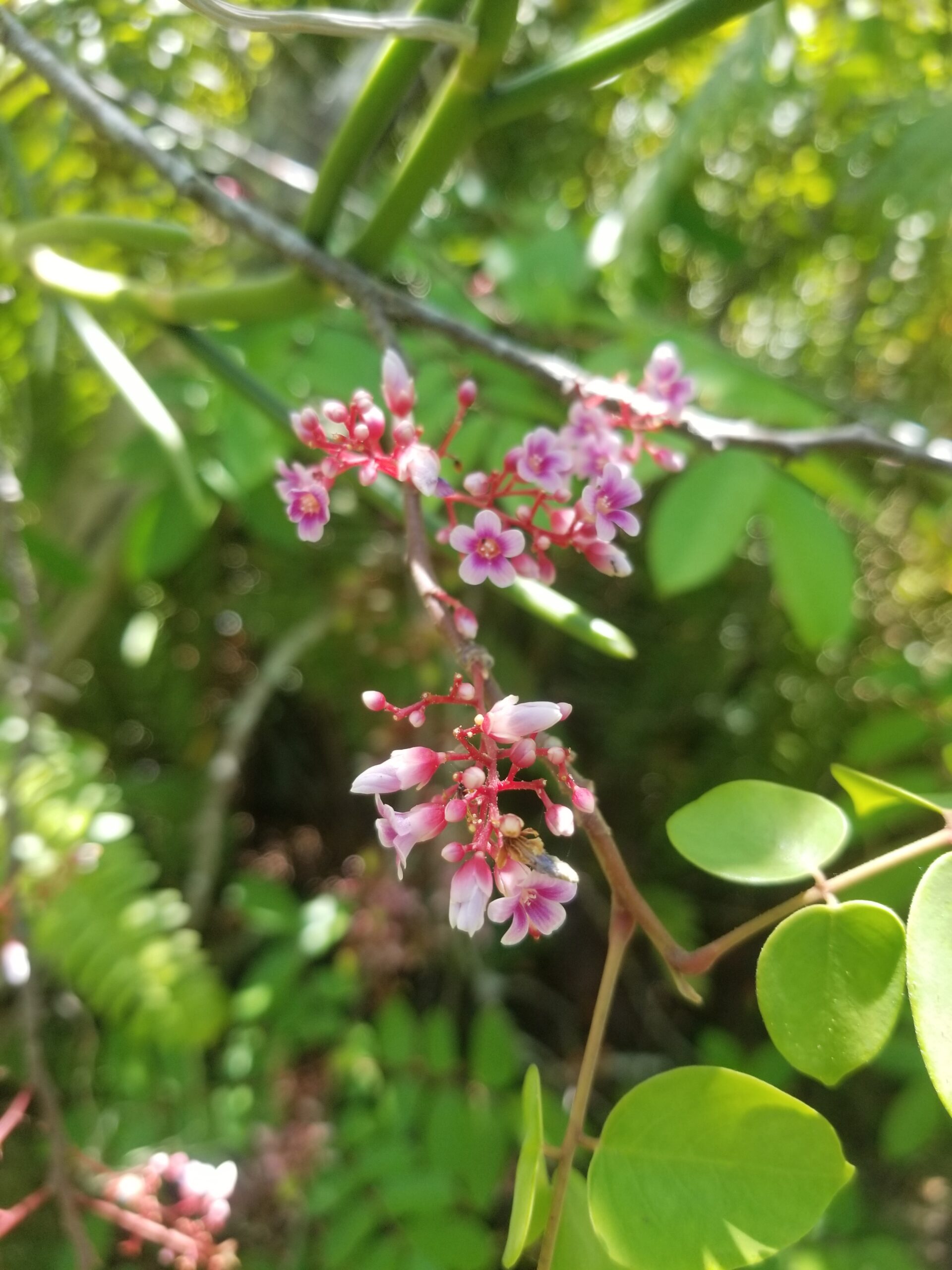Your cart is currently empty!

5 Bee-friendly Jamaican Plants
Posted by:
|
On:
|
There’s something deeply beautiful about walking through a garden alive with the hum of bees: soft, steady music of nature at work. Since starting my journey as a beekeeper with Bee Sweet Honey, I’ve learned firsthand that what you plant matters. Our bees don’t just visit any flower; they’re drawn to specific blooms that offer real nourishment. Today, I’m sharing five Jamaican plants that not only brighten your space but also create a safe haven for our hardworking pollinators. This is about more than beauty – it’s about protecting the heartbeat of our ecosystems. Let’s explore some bee-friendly Jamaican plants.
1. Star Fruit Tree (Averrhoa carambola) – Bee-friendly Tropical Tree for Jamaican Gardens



The Tropical Star That Bees Love
The star fruit tree is a true gem in Jamaican gardens. When it blooms, it puts out delicate pink to lavender flowers that cluster together like tiny bells – and bees simply can’t resist them. It has a sweet, slightly citrusy scent that is subtle but refreshing, almost like the first whiff of a fresh fruit basket.
Pro Tip : Plant one in a sunny, well-drained spot. Not only will it draw bees with its nectar-rich flowers, but you’ll also enjoy delicious star-shaped fruits throughout the season.
2. Cerasee Vine (Momordica charantia)

Nature’s Bitter Medicine
I’ll never forget my mom and dad steeping cerasee leaves for a bitter tea to start the day. This hardy vine grows wild along fences and roadside hedges across Jamaica, thriving in full sun. But beyond its cultural and medicinal value, cerasee is a hidden gem for bees. At sunrise, the blossoms open like little stars against a web of green. Cerasee has a crisp earthy-green smell. You can often spot bees weaving through the leaves with purpose.
Pro Tip: Let Cerasee grow wild along a back fence or trellis – it’s a bee-friendly Jamaican plant that requires little to no car, and adds a layer of ancestral wisdom to your garden.
3. Jamaican Logwood (Haematoxylum campechianum)
The Golden Gift of the Land
From mid-January to to early March, Jamaican Logwood trees bloom with fragrant, creamy-yellow flowers that light up the dry coastal landscapes. You’ll find them flourishing on limestone hills and the dry thickets, especially across, St. Ann’s coastal areas, hills of South Manchester, and in St. Elizabeth. Logwood flowers are small, yellow, and grow in soft clusters from the leaf axils. Through delicate in size, they burst with sweet fragrance that bees can’t resist.

The nectar flow is usually heavy and long-lasting, especially during wetter seasons. This makes Logwood one of the most important early-year nectar sources for Jamaican honeybees. The honey produced is light amber, with a clean, floral flavor that’s highly rated among honey lovers.
The Logwood tree is more than just a nectar source. Its wood is used locally for firewood, charcoal, and traditional dye-making, adding value to rural communities.
Conservation Note: Sadly, many of these trees are being cut down – often for charcoal or to clear land – and not being replanted. This is a growing threat to both wild and managed bee populations who depend on Logwood’s early-season nectar flow. The loss of trees means fewer floral resources for pollinators and a direct impact on local honey production.
When Logwood starts to bloom, the bees become noticeably more active. Hive weights increase fast, and the honey harvested during this part of the honey flow has a lightness and clarity that reflects the dry, breezy coastlines they bloom near. It’s one of the most bee-friendly Jamaican plants.
Plant Back What You Cut Down: If you must cut Logwood or any tree for charcoal, lumber or land use, consider planting new trees. Restoring native nectar plants is one of the most powerful ways we can protect our bees and preserve the unique flavor of Jamaican honey.
4. Moringa Tree (Moringa oleifera) – A Bee-friendly Jamaican Super-plant

The Miracle Tree
Almost every Jamaican yard has a moringa tree – and for good reason. Its soft white flowers bloom in clusters, offering sweet nectar that bees can’t resist. Moringa is fast-growing, drought-resistant, and produces a powerful boost to both humans and pollinators alike.
I often clip the leaves and dry them for tea. I love watching the bees get to the blossoms. The flowers have a very subtle honey-like scent that draws in pollinators from all around.
Pro Tip: Plant a moringa tree to the corner of your yard – it grows easily from cuttings and keeps the bees buzzing year-round, a perfect bee-friendly Jamaican plant.
5. Sorrel (Hibiscus sabdariffa) – A Seasonal Jamaican Favorite That Bees Love

A Taste of Christmas
No Jamaican holiday season is complete without the tangy, crimson drink made from sorrel. But beyond its place on the Christmas table, sorrel is one of the most bee-friendly plants in Jamaica. When in bloom, its bright red calyces and creamy pink flowers are a magnet for pollinators.
Bee Benefits: The flowers produce both nectar and pollen, making sorrel especially helpful to bees in Jamaica’s late-year dry season when fewer plants are in bloom. It’s dependable food source and supports hive health during slower months.
Early in the morning, when dew clings to the leaves, sorrel bush glows in the sun. You can gear the steady hum of the bees diving into blossoms. Planting sorrel isn’t just good for the bees – it reconnects you with Jamaican tradition. From home gardens to community farms, growing sorrel celebrates self-reliance, culture, and sustainability.
Pro Tip: Plant sorrel in full sun with moderate watering.
Planting for bees isn’t just about flowers. It’s about honoring the rhythms of nature, our heritage, and protecting the food systems we depend on. When I walk through my little garden or apiary, hearing the hum of life, I know I’m part of something bigger, something sacred. And you can be too.
